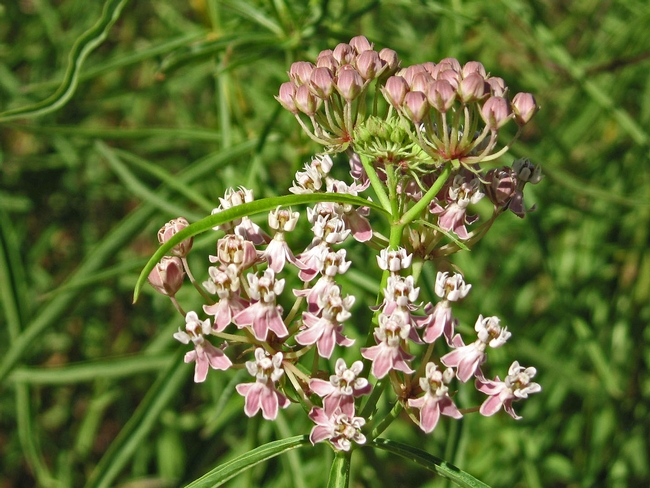Milkweed is named from the white milky sap that is exuded when the plant is cut or broken. The family name of Asclepiadaceae, is from the Greek name Asclepios, who was the god of healing. The name was probably derived because of properties that have, through time, been attributed to the sap. Over the centuries preparations from milkweed were recommended for many medicinal purposes ... from the treatment of contraception to heart disease. The alkaloids found in most milkweed plants are known to be extremely active in higher animal's (such as humans) systems ... but whether or not the specific medications were really effective is questionable.
The architecture of milkweed flowers is different than most ... the pistil is very short and the stigma is greatly enlarged and has the form of a slit or pouch. The pollen is not shed in single grains, but rather in groups of grains in what is called a pollinia. Each pollinia is held together by a waxy coating ... and is usually attached as a pair of pollinia by translator arms and a corpusculum ... fancy plant terminology for what a structure that looks like a minute "saddle-bag".
As an insect walks over the flower its legs or mouthparts can get "caught" on the translator arms (strap connecting the two pollinia) which pulls them (the "saddlebags") from sacs on flower. As the insects walks or flies the translator arms rotate the pollinarium 90 degrees and readies the pollinia for random insertion into another flower's stigmatic chamber. So, rather than mass random pollination, milkweeds rely on a very specific "round peg into a round hole" process which is totally reliant upon insects.
